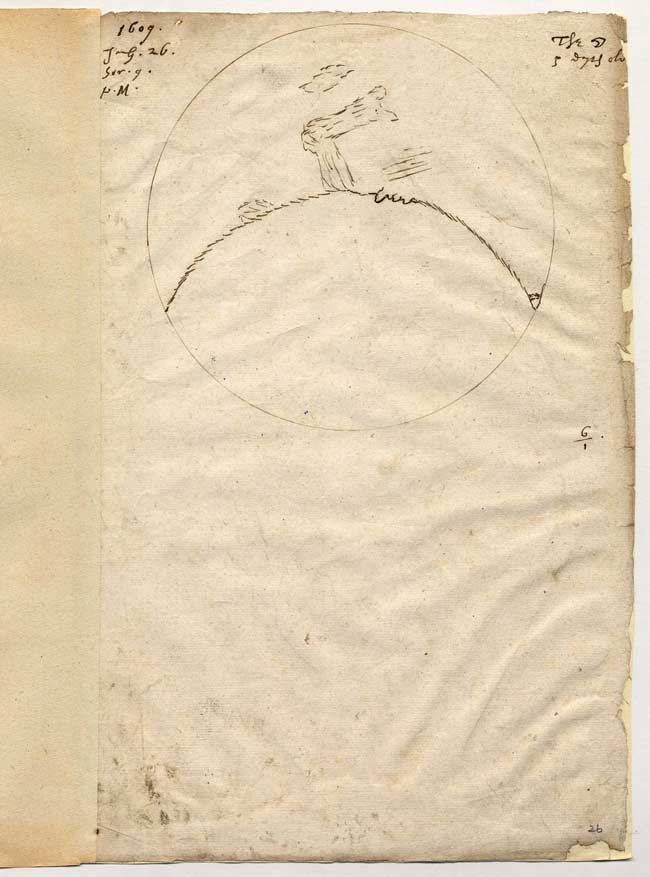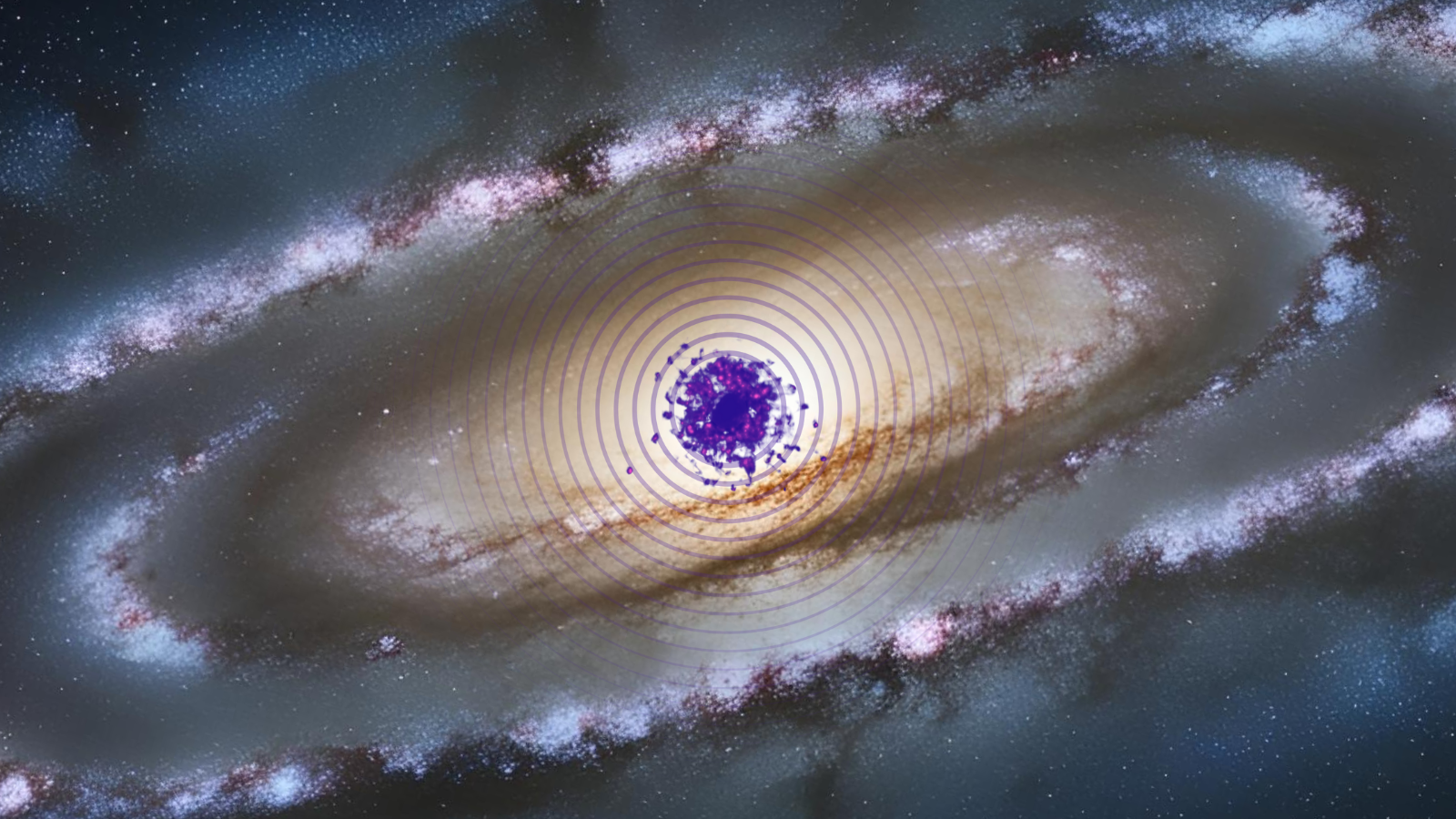Our Changing View of the Moon

The moon, so bright and large in the sky compared to other celestial objects, has captured the attention of humans at least since the dawn of consciousness. Over these eras, mankind's view of the moon has evolved, from the more mystical image of it as a god, to the thought it was covered in seas and vegetation. Most recently, it's been viewed as a dry and dusty wasteland.
Recent findings of water on the lunar surface could spur yet another shift in the way we see our orbiting companion.
The moon appears in early art thousands of years ago, showing that early man was as enthralled by its eerie glow as later philosophers and scientists.
The moon, like the sun and the five planets visible to the naked eye, was wrapped into the mythology of many ancient cultures, and considered deity by some ? to the Egyptians it was Thoth, to the Greeks, Artemis, and to the Hindus, Chandra.
Artemis was the twin sister of the sun god Apollo, and In Hellenic tradition she held sway over childbirth, fertility and the hunt. Stags were sacred to Artemis, and in many myths, she punished or killed those who harmed them, such as the warrior Agamemnon.
Thoth was portrayed as a wise counselor who solved many disputes and was also credited by the Egyptians as the inventor of writing and the 365-day calendar.
The Hindus explained lunar (and solar) eclipses with Rahu the snake, who swallowed the celestial orbs, making them go dark.
Breaking space news, the latest updates on rocket launches, skywatching events and more!
The moon was the basis of several ancient calendars and used in determining astrological happenings. The cycle of the moon's waxing and waning was tracked by many cultures and helped give rise to the modern month (the rough time it takes to go from full moon to new moon and back again), as well the name of the second day of the week, Monday.
The moon has even been blamed for some of the darker forces of human nature, such as temporary insanity. The term lunatic (and "loony") comes from the Latin name for the moon and many criminal and insane behaviors were once blamed on the presence of a full moon.
The full moon was also thought to transform afflicted humans into fearsome werewolves, a more recent mythological creature most common in European tales.
Full moons and lunar eclipses were also seen by some cultures as bad omens. When Christopher Columbus was stranded for a year on what is now Jamaica, during his fourth voyage to the New World, he intimidated the islands natives by correctly predicting a lunar eclipse.
The Man in the Moon -- an imaginary figure of a human, face, head or body -- has also long been a legend associated with the moon, and is still a feature spotted by children today. In the most commonly-recognized form in the West, the man's eyes are Mare Imbrium and Mare Serenitatis, its nose is Sinus Aestuum, and its open mouth is Mare Nubium and Mare Cognitum. In many European traditions, the figure is a man banished to the moon for some crime ? to some Christians, he is Cain, who murdered his brother Abel. To the Norse, he was Man?, who pulled the moon across the sky, while the ancient Chinese saw the figure of a rabbit pounding medicine.
Since Aristotle, the prevailing school of thought held that the heavens were more perfect than the Earth and therefore all celestial bodies, including the moon, were perfectly smooth spheres.
Galileo Galilei challenged this notion when he trained his telescope on Earth's satellite and sketched its surface. As he wrote in his1610 treatise The Starry Messenger, Galileo saw that the moon's surface was in fact rough and rocky with dark, flat, low-lying regions and brighter highlands.(Though Englishman Thomas Harriot is actually credited with the first maps of the lunar surface.)
Early astronomers could see the light and dark areas of the moon, and though the former were continents, while the dark regions were seas. It was even though well into the 19th century that the moon had vegetation and possibly even moon beings.
No astronomers ever believed the notion that has entered pop culture that the moon is made of green cheese. The phrase comes from an old proverb that makes fun of the overly-credulous, namely those that see the reflection of the moon in the water and think it is a wheel of green (or young) cheese.
The craters covering the lunar surface were not widely recognized to be the results of impacts until well into the 20th century. Astronomer and geologist Eugene Shoemaker brought the principles of geology to the study of the moon
Telescopic observations of the moon continued over the centuries, but scientists were left with only the limited view their Earth-bound perspective could provide.
Apollo answers
Once the era of rocket-powered space travel was ushered in, scientists could get information from a much closer vantage point.
Satellites sent up into space took more and better pictures of the lunar surface. In 1959, the Soviet Union's Luna 3 probe gave mankind it's first look at the far side of the moon.
But even with this better view, the moon was still something that most thought of as a distant body in the sky, untouchable to man.
The Apollo landings changed all that and gave humanity it's first up-close look at the lunar surface. The 12 Apollo astronauts that landed on the moon photographed, sampled and explored the gray, dusty terrain.
All told, these missions brought back to Earth about 840pounds (381 kg) of lunar rocks, which scientists zapped and examined to learn more about the moon's makeup.
With the Apollo missions, "we answered so many fundamental questions," said planetary geologist Larry Taylor of the University of Tennessee, Knoxville.
From these missions, scientists learned that the dark lunar maria (Latin for "seas") were never actually seas, as was thought by the ancient astronomers, but instead were composed of basalts, a type of volcanic rock. The brighter highlands though turned out to be made of the mineral plagioclase feldspar, a common rock-building mineral on the Earth as well.
The astronauts' experience also showed that the lunar environment was as "hostile as can be," Taylor said, with temperatures soaring during the day and plummeting again at night, as well as "a better vacuum than we can do in our labs" here on Earth.
The possibility of life existing on the moon held even through the first moon landing. The Apollo 11 astronauts were quarantined for several days to make sure they hadn't brought back any germs from the moon or space.
Understanding what the moon was made of also helped scientists develop a theory for how it formed. The leading theory now: The collision of a Mars-sized object with the Earth broke off chunks of molten material that eventually coalesced and cooled into the moon.
"And that was really revolutionary," Taylor said.
Before the collision theory began to hold sway, other explanations for the moon's formation included fission of the Earth by centrifugal forces (the severed chunk leaving behind a large basin, usually named as the Pacific Ocean); capture of the moon after it formed elsewhere and wandered into the Earth's neighborhood; and formation at the same time as the Earth from the primordial accretion disk around the sun.
With the end of the Apollo program, interest in the moon tapered off until more recent missions.
The new view
The science and understanding that came out of the Apollo program painted the moon as a long-dead, static body, and interest shifted to other destinations in our solar system, particularly Mars, with its enticing prospect as a suitable habitat for alien life.
The United States finally returned to the moon with the Clementine spacecraft in 1994 and the Lunar Prospector in 1998. Lunar Prospector turned up interesting signals that seemed to indicate the presence of hydrogen near the lunar poles ? a possible sign of water trapped in permanently shadowed craters where scientists had suspected it could exist.
To further investigate the prospect of frozen water in polar old traps, NASA developed and launched the Lunar Reconnaissance Orbiter (LRO)and its partner LCROSS impactor. LRO's mission is to map the lunar surface, while LCROSS slams into one of the polar craters to see if the ejecta debris shows signs of the water ice.
But much to everyone's surprise, it was not LRO and LCROSS that first turned up definitive signs of lunar water, it was a NASA-built instrument on India's Chandrayaan-1 satellite, along with the Cassini and Deep Impact spacecraft.
These probes detected the signature of molecular water stuck to the surface of the planet ? how it got there and exactly what form it is in is still a mystery ? in very small quantities.
The unexpected discovery is "one of the biggest findings post-Apollo," said Ray Arvidson. It could also be "a shot in the arm to lunar exploration," renewing interest in both robotic and human missions to our satellite, he added.
But whatever future missions are planned, one thing is certain: The existence of water on the moon changes the way we think about our satellite. Instead of a dead, gray rock orbiting the Earth, "it's a dynamic world in our backyard," said Jim Garvin, one that will help us learn more about the solar system we live in.

Andrea Thompson is an associate editor at Scientific American, where she covers sustainability, energy and the environment. Prior to that, she was a senior writer covering climate science at Climate Central and a reporter and editor at Live Science, where she primarily covered Earth science and the environment. She holds a graduate degree in science health and environmental reporting from New York University, as well as a bachelor of science and and masters of science in atmospheric chemistry from the Georgia Institute of Technology.
